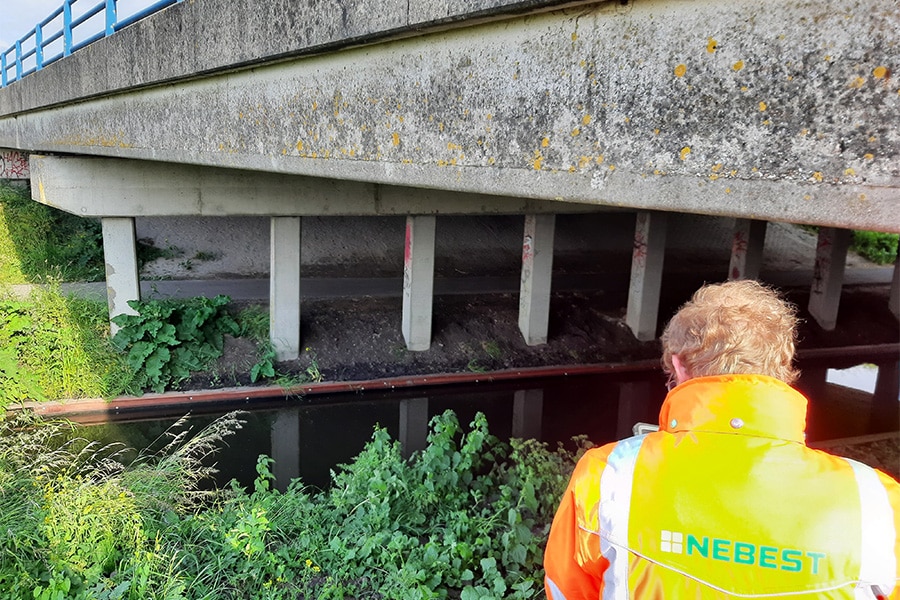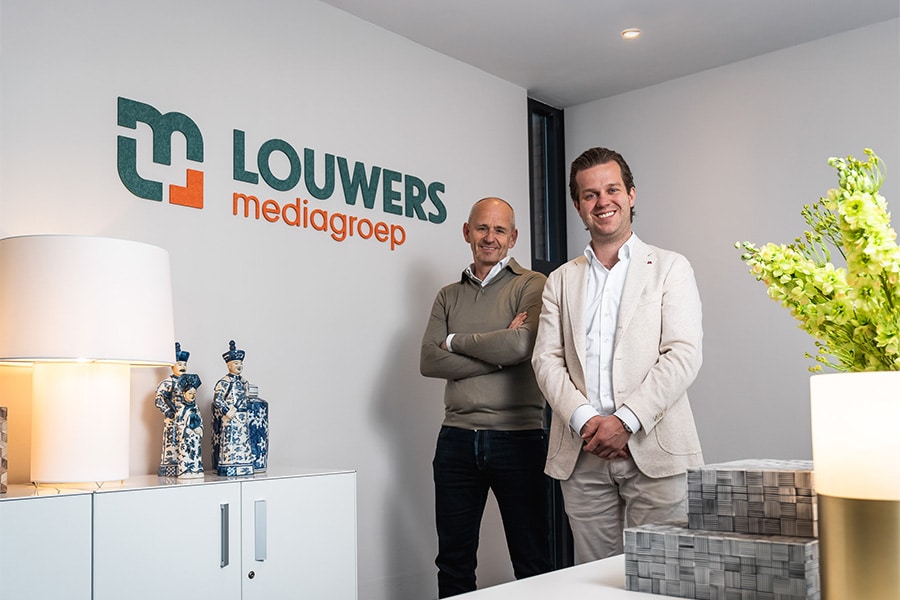
New Connection N69: Integral mix of connection, sustainability and innovation
A cleaner and safer road, a smoother flow, less cut-through traffic and a more beautiful environment. These are the spearheads launched by various parties around the overall Grenscorridor N69 solution. The program to be delivered in 2025 is an integrated set of measures aimed at optimizing livability and accessibility in the area between Eindhoven and the Belgian border. Specifically, it involves a solution for regional and local traffic that also raises the spatial quality to a higher level. Christophe van der Maat (member of the Provincial Executive for Mobility, Finance and Organization of the Province of Noord-Brabant), Michel Bekooy and David Vermeire (project manager and director, respectively, at the main contractor Boskalis) shed their light on a broadly supported program that will lead, among other things, to the most sustainable road in Brabant.
Text | Chris Elbers Image | Boskalis/Wim Roefs

Christophe van der Maat, commissioner of Mobility, Finance and Organization of the province of North Brabant. (Image: Wim Roefs)
The Grenscorridor N69 concerns the area from Eindhoven to Belgium, and from Eersel and Veldhoven to Heeze-Leende. An extensive zone within which good accessibility and flow is crucial for the Brainport region. Reason for the province of North Brabant to build a new road within the area that will lead freight traffic in particular around Waalre and Valkenswaard. "The construction of the route, which runs from Luikerweg south of Valkenswaard to the A67 below Veldhoven, is indeed the main point within the whole thing," said Van der Maat. "But it goes further, much further. This program, for which the agreements were already laid down in an area agreement in 2012, is an integral, sustainable and widely supported whole in which we will also include a number of zero-plus measures and area impulse initiatives in close cooperation with various municipalities, Natuurmonumenten, Staatsbosbeheer, Waterschap De Dommel and ZLTO. A new stretch of asphalt alone is not enough. It is also important that we work towards a sustainable future for agriculture and a strengthening of nature on the basis of existing nature and water tasks. In other words, we are putting together an integrated puzzle with the primary goal of improving traffic safety and quality of life in the villages through which the N69 currently passes. The integral character of the program is also the reason why we eventually arrived at a broad package of agreements. This involves constant consideration of who can do what best. This has led to a comprehensive and diverse process that has taken quite some time since its inception in 2015 to actually get underway. Thus, there have been some delays and we have had to make some adjustments. After thorough preparation, the first shovel for the route went into the ground at the end of last year. Now the task is to realize the objectives towards the future in phases."
Quality
Taking the first project steps gives Van der Maat great satisfaction. At the same time, he is very pleased with the fact that the quality sought in the area has been translated in full into the tender. "The new N69 must become the province's greenest and most sustainable road," he says. "You can see that aspiration reflected, among other things, in the reuse of all kinds of materials and in the application of an innovative asphalt overlay.
So the integration of the road into the whole by main contractor Boskalis is really happening in a way that will raise the quality of the area to a higher level. And everyone can reap the benefits of that. Look, there will always be people who say that the road does not have to be there. However, I am convinced that soon everyone will see and experience the great benefits of the new connection."

An overview of the route.
One whole
The sustainability principles espoused by Boskalis are reflected one-to-one during the construction of the 8.5-kilometer road and some thirteen structures, scheduled for completion in late 2021. "Energy reduction, reuse of materials and livability, three important pillars of our sustainability policy, come together beautifully within this project," Vermeire said. "Regarding the latter aspect, during the construction of the new N69 we are trying to significantly enhance the spatial quality of the area." The perception of the landscape in general and both stream valley bridges in particular should prevail over the road as much as possible. Boskalis does this by zipping the road and the engineering structures into the landscape, as it were, and connecting them as much as possible to the existing natural elements. Forest, water, agricultural land and road all have to become one. "To achieve that, we are also bringing in various sustainable solutions," Bekooy says. "Take for example the two large stream valley bridges on the route. The center-to-center distance, the spread of the piers and the arch radius of the decks have been optimized for maximum transparency and visibility. This also ensures the slender shape of both artworks, a conscious choice that also results in a considerable reduction of cement." Another important contribution are the solar panels integrated into the railings, making the road energy-neutral.

Foil construction sunken Mill Street.
CO2 saving
A similar gain is achieved by using a special foil instead of concrete for the two sunken embankments to keep out groundwater. A significantly shorter lead time is an additional icing on the cake. In addition, some of the felled trees will be reused for bridge railings, furniture and partitions, among other things. "With this new N69 we want to arrive at the greenest and most sustainable road in Brabant," Bekooy once again articulates the ambitions. "The initiatives rolled out to this end should ultimately save some 6,800 tons of CO2. Now, about halfway through the project, we are right on track. And in terms of planning, we are also on schedule despite the corona measures with our 150-employee work crew."

Innovative asphalt overlay.
Freedom
At Boskalis, they praise the cooperation with the province of North Brabant. "It's great to see how you can encourage and strengthen each other around a project like this to achieve results," says Vermeire. "This shows once again that you need each other and have to give each other space. Nothing but praise for that as far as we are concerned. The province has given us every opportunity to come up with innovations. An example is the two test sections on the route, with an innovative noise-reducing asphalt overlay consisting of a high percentage of recycled asphalt and an innovative new binding agent. This binder features a rejuvenating agent for regeneration of the old asphalt granulate and can be applied at a 30°C lower production temperature. This in turn reduces CO2 emissions. We were allowed to develop the innovative coating in our own laboratory for practical application. Not everyone dares to give a supplier such freedom. Hats off, then."
For more information about the area task Grenscorridor N69 and the construction of the new road, visit www.grenscorridorn69.nl.



